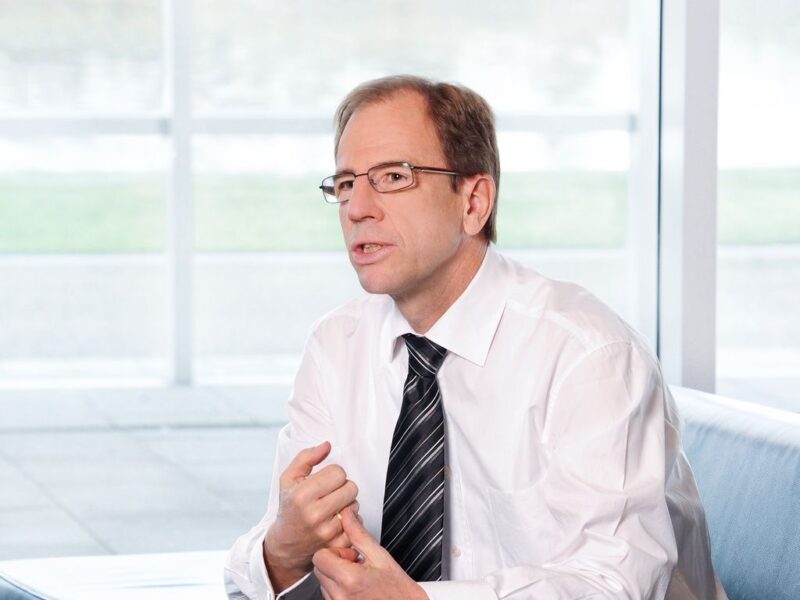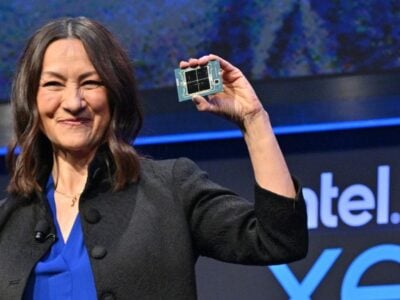
Security and industry 4.0: key assets for European growth
eeNews Europe: Infineon is the undisputed market leader in power semiconductors, devices that find their way in transport, automotive, industrial equipment and energy infrastructures. You list both Alstom and Siemens as important customers due to their activities in power generation and rail transport infrastructures. So what impact could have the acquisition of Alstom’s Energy activities by General Electric and would Infineon rejoice if Siemens came at the top of the negotiations?
Dr Reinhard Ploss: We are a major supplier to all players in these fields, and actually we supply more to Siemens than to Alstom. So we can cope with either scenario, it would not make a big difference to the whole picture for us. Of course, from a European perspective, I understand that France would want to favour Siemens, focusing on maintaining industrial strength in Europe.
EETE: French’s Economy and Industry Minister Arnaud Montebourg has just signed a decree that allows government to block foreign investment at will in key areas including energy, equipment, plants and transportation that are critical for national security and health.
Do you think there should be a European strategy to handle such large-scale and fairly strategic business acquisitions that have vast repercussions on European jobs?
Dr Ploss: I think it is always dangerous to bring in politics into business decisions as it tends to distort the market. If you are too protective and you shield your businesses from competition, then when competition eventually comes, your business dies quicker.
I think that Europe could certainly do more for its industry, not by protecting selected businesses, but with directed public procurement strategies within the European market to grow and strengthen its key industries. Energy is a key challenge for Europe and the EU should strengthen its foothold with new production capabilities.
That’s why I like Neelie Kroes’ "Airbus of chips" initiative. Whether Europe could reach 20% of global chip manufacture by 2020 is debatable, but far beyond chip production, she has the vision of strengthening the microelectronics industry as a key enabler for many other industries. If you don’t support key enabling technologies, how do you support all the other activities that rely heavily on electronics?
EETE: In this buyout frenzy, could Infineon become a takeover target?
Dr Ploss: It would certainly be gratifying to be a takeover target, Infineon is a very technical company with a very strong market position. But look at the trend of our share price, we have proven to be consistently getting stronger and stronger, we are growth oriented. Now who would reap the benefit of such a takeover?
Thanks to recent investments in 300mm wafer fabs, we are now able to drive down our capex, so it would not make a lot of profitability gain for an acquirer to cut Infineon into pieces. We are in a market leading position on several fronts, and it is unusual for companies to buy leaders, we feel strong and valuable to our share-holders so I see it unlikely to happen.
Of course, should a company or government approach us to make an offer, it would be my duty to look into it and consider it seriously. We would have to put the offer in perspective with how more valuable we think the company could develop on its own in the future.
On the contrary, because of our strong cash position, we are constantly screening the market for valuable acquisitions to make.
EETE: Infineon is leading the three-year Euro 55 million “eRamp” project in Dresden, it is also a driver of the Electronic Components and Systems for European Leadership (ECSEL) initiative. Do you plan to open up new fabs in Europe to support these initiatives?
Dr Ploss: I am highly confident that we’ll continue to develop our manufacturing base in Europe. We are the only company worldwide to produce power semiconductors on 300-millimeter thin wafers and the cost/performance we achieve will enable us to stay competitive on a global basis.
By investing early on 300mm wafer fabs for power semiconductors Infineon is now realizing a capital expenditure advantage of around 25-30% compared to 200mm technology. Thus we are now able to cut-back our future investment ratio from 15% to approximately 13% of sales over the cycle. So we harvest the benefit from our long term strategic thinking.
Alongside our 200mm wafer fabs which are fully loaded, our 300mm fabs give us plenty of growth potential and I expect the cost advantage will allow us to grab more share of the market.
The former Qimonda fab in Dresden has been converted for the production of power semiconductors on 300mm wafers and the volume production for our CoolMOS products is just ramping up but with our strong growth in Industrial Power Control and Power Management, we expect this fab to fulfill up to 70% of our growth, the reminder 30% being addressed by our Villach (Austria) 300mm site.
I am confident we’ll need all that capacity and we are committed to maintain production in Europe, but as for building new fabs in Europe, ask me in five years’ time.
Infineon is the only non-Japanese IGBT supplier to be really engaged in automotive. The demand for hybrid electric cars will grow, and who is able to supply the volumes? Infineon. It is a clear commitment to manufacture in Europe where key automotive manufacturers are based.
EETE: What are the driving forces for the Automotive market, especially in electromobility?
Dr Ploss: Driver assistance systems are truly a hot topic, they are becoming a must in most high-end cars, and there is a real pull by customers on the lower end of the market. This means a lot of additional electronics, from electric power steering to surround sensors and infotainment.
Government regulations and energy efficiency are other hot topics, and all the combined electronics can be optimized to reduce CO2 emissions, with sensors that determine when driver assistance is most needed.
The big question is: when will the connected car become mainstream? Sensing will become extremely important, combined with real time car-to-car and car-to-infrastructure connectivity to manage autonomous driving schemes. This will call for another hot topic, network security and secure software architectures.
EETE: Secure chips for smart cards, encryption, trusted platform modules, e-passports, accounted for 12% of your company’s global revenues in 2013. Yet there is a trend for more cloud-based mobile payments pushed by Android 4.4 (KitKat) and its Host Card Emulation (HCE), implementing cloud-based secure elements instead of relying on SIMs or the smartphone’s crypto-processor.
How would you expect this trend to affect your secure chip business? How could the Internet of Things change the landscape and is it driving growth in this sector?
Dr Ploss: We see HCE as a positive thing to drive more income from our secure solutions. Host card emulation will drive more mobile payments but sooner or later, people will recognize that software is not so simple to maintain at a secure level, just look at the recent SSL hack.
So I think that security will move back to hardware. Many companies are nervous about hackers and high reliability can only be achieved with solid anchors (secure chips). When you lose your data to a hacker, it is never as obvious as when you lose your wallet, and the industry is often playing it down.
But eventually consumers will become more aware of security issues and I think that SIM cards or other secure elements will remain a key part of secure communications and transactions in the area of mobile payment. Infineon is already recognized for its high reliability EAL5+ certified security chips, we are the first supplier worldwide of security products and gaining further market shares with our digital security architecture (Integrity Guard) and our Solid Flash technology.
The Internet of Things has many folds so it is difficult to say which aspect will drive security the most. Machine to machine communications for what we call in Germany the Industrial 4.0 revolution could be the main driver, together with autonomous driving and home automation.
Companies all want to protect their communications and their machines against spies and attacks, including smart grids. There are a lot of consumer applications for home automation, take for example the replacement of LED bulbs which can be controlled from your smartphone.
You would think it is not so important to secure the communications for your lighting, but after installation, the majority of users are hesitant to open up their network to the internet. So there will be a need for some sort of firewall. The ageing society in Europe represents a big challenge, but also an opportunity for more remote healthcare and cloud-based activities, possibly with remotely controlled robots checking on the elderlies.
In Europe, we have excellent hardware but we need to build the backbone for secure communications to make this happen at all levels. If you have to download software updates to your car, then you want to be sure hackers do not capture your car.
EETE: In Infineon’s strong Q2 FY14 sales figure, the growth of the Industrial Power Control (IPC) segment was quite spectacular at 28% (yoy). What are the particular factors that explain this growth and how do you expect this segment to fare in the coming years?
Dr Ploss: This segment follows cyclical ups and downs. Here we are experiencing a recovery out of a market depression since the peaking of renewables in 2011. China is now driving the renewable sector, automation and public transports are also going strong, so we assume this business segment to continue its growth.
Related articles:
Is Infineon really back on track?
Industrial surprise in Infineon’s strong Q2
 If you enjoyed this article, you will like the following ones: don't miss them by subscribing to :
eeNews on Google News
If you enjoyed this article, you will like the following ones: don't miss them by subscribing to :
eeNews on Google News




